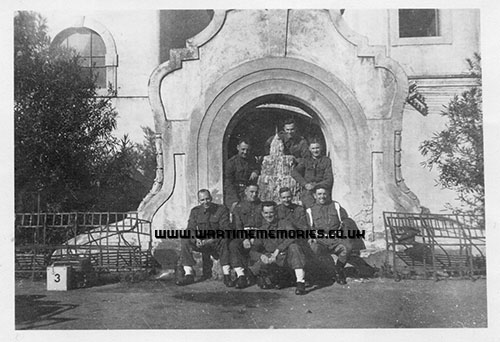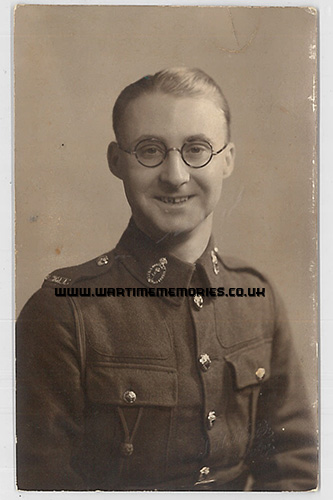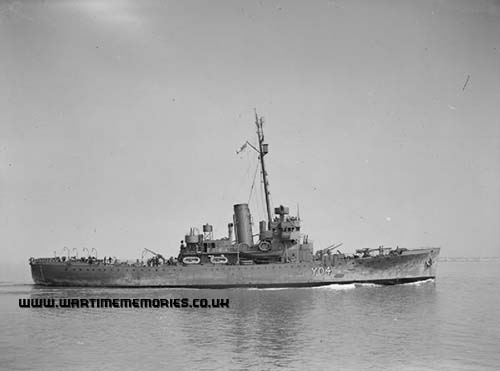|
|
|
Those known to have fought in Operation Torch during the Second World War 1939-1945. - Bedford Stanley F.. Sig. (d.17th Dec 1942)
- Herbert Philip Edward Henry. CPO. (d.8th Nov 1942)
- Hirst James Richard. Pte.
- Holroyd Frank. Pte. (d.5th Feb 1943)
- James Albert Edward. CSM
- Lambshead MM.. Percie. Sgt.
- Saunders Charles. Pte.
- Smith Sydney Harry Hyder. Cpl.
- Taylor Buchan Bruce Dundas. Tpr.
The names on this list have been submitted by relatives, friends, neighbours and others who wish to remember them, if you have any names to add or any recollections or photos of those listed,
please
Add a Name to this List
|
|
|
The Wartime Memories Project is the original WW1 and WW2 commemoration website.
Announcements
- The Wartime Memories Project has been running for 24 years. If you would like to support us, a donation, no matter how small, would be much appreciated, annually we need to raise enough funds to pay for our web hosting and admin or this site will vanish from the web.
- 27th April 2024 - Please note we currently have a huge backlog of submitted material, our volunteers are working through this as quickly as possible and all names, stories and photos will be added to the site. If you have already submitted a story to the site and your UID reference number is higher than 264001 your information is still in the queue, please do not resubmit, we are working through them as quickly as possible.
- Looking for help with Family History Research?
Please read our Family History FAQ's
- The free to access section of The Wartime Memories Project website is run by volunteers and funded by donations from our visitors. If the information here has been helpful or you have enjoyed reaching the stories please conside making a donation, no matter how small, would be much appreciated, annually we need to raise enough funds to pay for our web hosting or this site will vanish from the web.
If you enjoy this site
please consider making a donation.
Want to find out more about your relative's service? Want to know what life was like during the War? Our
Library contains an ever growing number diary entries, personal letters and other documents, most transcribed into plain text. |
|
We are now on Facebook. Like this page to receive our updates.
If you have a general question please post it on our Facebook page.
Wanted: Digital copies of Group photographs, Scrapbooks, Autograph books, photo albums, newspaper clippings, letters, postcards and ephemera relating to WW2. We would like to obtain digital copies of any documents or photographs relating to WW2 you may have at home. If you have any unwanted
photographs, documents or items from the First or Second World War, please do not destroy them.
The Wartime Memories Project will give them a good home and ensure that they are used for educational purposes. Please get in touch for the postal address, do not sent them to our PO Box as packages are not accepted.
World War 1 One ww1 wwII second 1939 1945 battalion
Did you know? We also have a section on The Great War. and a
Timecapsule to preserve stories from other conflicts for future generations.
|
|
Want to know more about Operation Torch? There are:115 items tagged Operation Torch available in our Library There are:115 items tagged Operation Torch available in our Library 
These include information on officers, regimental histories, letters, diary entries, personal accounts and information about actions during the Second World War. |
|
Sig. Stanley F. "Stun" Bedford 11th LofC Coy. Royal Signals (d.17th Dec 1942) Stun, Stanley Bedford was my grandfather's youngest brother.
At the outbreak of WW2 he worked as a clerk in the offices of the GLC (remember that?).
He joined the Royal Signals as a Dispatch Rider (DR) and served with the 11th Line of Communication Signals in North Africa during Operation Torch.
Stan was killed on 17th of December 1942.
The circumstances are as yet undiscovered.
His grave lies in the Bone Commonwealth War Graves Cemetery in Annaba, Algeria.
His wife Rosa had a son Donald, whom he never saw.
Shortly after the war she emigrated to Canada.
He was the son of Thomas and Ada Bedford, my great-grandparents.
|
Tpr. Buchan Bruce Dundas "Buck" Taylor No.3 Trp., B Sqdn. 2nd Lothians and Border Horse On 18th of April 1939, Buchan Taylor (my father) joined the Territorial Army in Edinburgh as B. Taylor and was accepted into the 19th Armoured Car Company, Royal Tank Regiment (T.A.), Lothian and Border Horse. He was 19 years old. Weight: 182 lbs.and Height: 5ft 11in.
Because Buchan spoke fluent German, he served in the Squadron Leaders tank of 3 Troop B Squadron, 2nd Lothians and Border Horse in 26th Armoured Brigade, 6th Armoured Division, V Corps, British First Army during Operation Torch (initially called Operation Gymnast). In March, when the 2nd Lothians and Border Horse upgraded to Sherman tanks, the 6th Division then came under IX Corp. Once Bizerte was taken Operation Torch would come to an end, but Bizerte was not taken until May 1943.
Buchan said he had two tank commanders in North Africa in B Squadron. In the Crusader tanks it was Major G.E. Simpson, and later in the Sherman tanks it was Major Anstruther-Gray (aka Baron Kilmany, MP). It was Anstruther-Gray that wrote to his mother during the war to inform her that Buchan had been seriously wounded, and also who corresponded with mum (Veronica, nee Henry) after dad had died so that she was able to get the War Widows pension. Buchan was wounded when the tank was hit overlooking Goubellat Plain. He and Trooper John Hunter were seriously hurt. Buchan dragged Jack out of the turret but he died of wounds the following day. See the British IWM catalogue photo# NA 2357 taken by the No. 2 Army Film & Photographic Unit.
The following are the battle honours of the 2nd Lothians, as part of the 6th Armoured Division in North Africa, that dad participated in:
- 18 January - 25 January 1943: Bou Arada
- 7 April - 11 April 1943: Fondouk
- 22 April - 26 April 1943: El Kourzia
- 5 May - 12 May 1943: Battle of Tunis
Although it is not in the battle honours, he also fought in the battles for Kasserine Pass and Thala.
G.W. Martin, who wrote Driver Advance, was in his tank troop, there were 3 tanks per troop in 1942/43. Buchan's Sherman was destroyed by a volley of 4 rounds from German 88s and a group of Panzers that included MkIVs and a Tiger tank. It was within 100 meters of British N.W. Grid Reference 7317 [more accurately 730175], French Grid Reference 230125 (36° 29.310'N 9° 44.655'E.). At around 4:30 pm, 23rd og April 1943, his Sherman tank may have initially been hit by an armour piercing shell (Peenemunder Pfeilgeschosse) that struck the tank, stopped it in its tracks and actually sent it backwards enough for it to be almost out of sight behind the hill that it was going over. Both tracks had been blown off in the initial strike, and the driver's arm was blown off. Then it may have been struck by a high explosive (HE) round that they called molten lead, as it sprayed white hot metal fragments around the interior along with numerous flying splinters from the tank hull and equipment inside. One piece of white hot shrapnel almost severed 99% of Buchan’s right leg below the knee and splinters struck him in the centre of his right hand, between the ribs of his lower left chest, his groin and other places in his body. His right leg was hanging by a few shreds of tissue, which was cut away by a pair of scissors by the medics from Section 4 of the 165th Light Field Ambulance as he lay on the ground beside the tank. According to his medical record only three and a half inches of his right tibia stump remained.
The following is a chronology of the remainder of Buchan’s wartime service:
- 23rd April 1943 Battle Casualty recorded by, Unit Medical Officer. Regimental Aid Post - leg off (actually on battlefield) transferred to S.E.C.4, 165 Light Field Ambulance
then No.19 Casualty Clearing Station in state of shock. 24 yrs old.
- 24 April 1943 at 0630 hrs operated on including right leg, right hand, left loin.
- 27 April 1943 transferred to No.8 Casualty Clearing Station (2 days)
- 28 April 1943 Transferred to No. 71 General Hospital and operation on 29 April at 1400 hrs (4 days)
- 2 May 1943 Evacuated by stretcher to No. 36 General Hospital (5 days)
- 4 May 1943 Transferred to No. 31 General Hospital
- 7 May 1943 Evacuated by stretcher to No. 36 General Hospital (8 days)
- 14 May 1943 Travelled by hospital ship HMHS Amarapoora (9 days)
- 24 May 1943 Discharged from hospital ship for disembarkation to Shore Hospital as a cot case and admitted at Morriston Emergency Hospital, Swansea, Wales, SA6 6NL (15 days)
- 1943 Gogarburn, Scotland (34 days)
- 12 July 1943 Bangour Emergency Medical Services Hospital, Broxburn, West Lothian (101 days)
- 21 Oct 1943 Arrived midday at Gogarburn Hospital, Edinburgh (16 days)
- 9 Nov 1943 Castle Craig Auxiliary Hospital (14 days)
- 24 Nov 1943 Arrived midday at Gogarburn Hospital, Edinburgh (7 days)
- 30 Nov 1943 Castle Craig Auxiliary Hospital (21 days)
- 21 Jan 1944 Arrived midday at Gogarburn Hospital, Edinburgh (5 days)
- 26 Jan 1944 Limb-fitting treatment and discharged home
- 17 Mar 1944 First artificial limb fitted
- 22 Mar 1944 Discharged
- 2 Aug 1944 Admitted 3 pm to Edenhall (Ministry of Pensions) Hospital, Musselburgh (large shrapnel found deep in ends between 9th-10th left ribs). Operation on 14 August
- 31 Aug 1944 Discharged
In October 1944, Buchan enrolled as a veterinary student, his details are recorded as, Weight: 170 lbs., Height: 5ft 9 1/2in., Age: 27 yrs old.
|
Pte. Frank Holroyd 1st Btn. Parachute Regiment (d.5th Feb 1943) All we know is that my grandfather's uncle Frank Holroyd is believed to have been at Dunkirk and died in Tunisia on the 5th of February 1943, supposedly married to a woman named Elizabeth from Glasgow though this was unknown to the family.
|
Cpl. Sydney Harry Hyder Smith 200th Company Military Police  After his call-up, Harry Smith started his training at Maidstone.
His wife was pregnant with their first child at the time and Harry suffered from morning sickness. He claimed this was the only time he saw the RSM laugh.
He was particularly proud of having been subjected to physical training under Stan Cullis, a famous footballer who was highly critical of his football skills.
He was subsequently trained as a driver and dispatch rider at Catterick, Yorkshire. (He was already able to drive having owned his own car before the war.) He was put in charge of a group of 6 who collected newly landed Jeeps from Glasgow and drove them to Liverpool for embarkation to North Africa. On the way south it rained heavily and he had to find a forge where they could drill holes in the floor so they didn't have to drive with their feet in water.
He travelled on a troopship from Liverpool to Algiers. The ship carried six thousand soldiers many of whom including Harry slept on deck. They travelled in convoy far out into the Atlantic before turning back for North Africa in order to avoid U-boats and air attacks but in spite of that, he recalled that several ships blew up and sank, sometimes in the night. The convoy didn't stop.
He landed somewhere around Algiers as part of the 1st Army in Operation Torch). The 1st Army was disbanded after the victory in Tunisia in 1943 after which he was part of the 8th Army.
I am fairly sure that at various times he was in Algiers, Bizerte, Tunis, Tripoli, Benghazi, Tobruk, Sidi Barrani, Mersa Matruh and Alexandria.
He told a story of driving a truck with faulty steering (a broken tie rod) along a stretch of road known as Messerschmidt Alley, because it was straight with desert either side so that German aircraft could easily attack traffic on the road, but because of the steering fault his truck would dart from side to side unexpectedly and so he evaded attack.
He was placed on a train in Mufti to investigate the loss of goods from the train. He found that at one point the track was on a tall curving sand embankment so shaped that although he could see goods rolling down the embankment he could see neither where on the train they were being thrown from nor where they finished up at the bottom of the slope.
He was part of the invasion of Sicily but talked little about this apart from having attended an opera performance in an ancient amphitheatre.
He was landed in Italy, either Anzio or Salerno (probably Salerno). He told of a day when all 30,000 soldiers in the beachhead were told to strip and wash in the sea for lack of other facilities.
He ended the war in Rome and was appointed condottore.
He returned home in about September 1945. For some time after his return he slept on the floor because a bed was too soft.
In North Africa he contracted malaria from which he suffered recurring bouts during my childhood.
|
Sgt. Percie Lambshead MM. Duke of Cornwalls Light Infantry My father, Percie Lambshead, joined the Territorials in 1938 and was called up in 1939. He served with the Duke of Cornwall's Light Infantry in WW2. His battalion was sent to guard the beaches in Kent in 1940 being told that they would all die. He then guarded Falmouth Docks.
Dad underwent commando training in Scotland for the invasion of Norway, but this never happened. He was then involved in commando raids from HMS Prince Leopold in the English Channel.
He landed with the 4th Infantry Division with Operation Torch and fought at the Battle of Cactus Farm. Dad was in the chase to Cape Bonn being attacked by spitfires. At the lighthouse, on taking the surrender of Germans, they opened fire causing casualties. The Duke of Cornwall's Light Infantry battalion was then disbanded forming a Cornish Company in the King's Shropshire Light Infantry.
Dad was in the 1st Division which invaded Panterlera. Following a bout of jaundice, he returned to his unit prior to the invasion of Anzio. His company was the furthest forward at the flyover. Every officer was injured and my father led the company. For this action he was awarded the Military Medal. On the breakout from Anzio, his platoon was hit by a mortar with every man injured.
For the rest of the war he was on courses.
|
Pte. Charles Saunders 5th Btn. Northamptonshire Regiment Charles Saunders joined the Middlesex Regiment 1941 aged 18.
On completing basic training he was transferred to the Northamptonshire Regiment, 5th Battalion.
He was on the Torch landings on the 8th of November 1942 and was wounded in the second battle at Longstop Hill in 1943.
He went on to continue through the war until the end taking part in many actions and getting wounded again in Italy.
He was demobbed in 1946.
|
Pte. James Richard "Grim Jim" Hirst 1st Battalion Suffolk Regiment James Hirst was called up to the Essex Regiment and was transferred to the 1st Suffolks in 1940.
He volunteered for glider training which was cancelled, then volunteered instead for Special Service Battalion at Dartmouth. He became redesignated as No.1 Commando. He was in the Reserve Unit at St.Nazaire and Madagascar. He landed at Algiers as part of Operation Torch and took part at Sedjenane. He received the Africa Star as part of 1st Army. He then returned to the 1st Suffolk Regiment and trained for D-Day. He landed on Sword Beach and as member of A Company and helped take position Hillman. He was moved on to Chateau de la Londe and repatriated after being wounded there. He was transferred to Royal Engineers to end of war.
Jim died in August 2015.
|
CPO. Philip Edward Henry Herbert HMS Walney (d.8th Nov 1942) Philip Herbert was born on 23rd of Nov 1899 in Willesden, London. He was the son of Henry James & Annie Elizabeth Herbert and the husband of Dorothy Herbert of Gillingham, Kent.
His naval life started in 1915 as Grade 2 Boy on HMS Ganges, in 1917 he signed up for 12 years and served on many ships including HMS Ganges, Pembroke and Weymouth.
The next record I found was his death in 1942. He was serving on the HMS Walney. I think his ship was part of Operation Torch. Sadly HMS Walney was sunk on 8th of November 1942 with a loss of around 200 men. His name is on the Memorial at Chatham Docks where one of his great grand daughters is a Visitor Guide.
|
CSM Albert Edward "Jesse" James 50th LAA Regiment Royal Artillery My father Bert James, kept a diary from October 1942 through March 15 1943. He landed with the Commando's and the Americans at what I gather is Beer Beach, Algiers, in Operation Torch.
|
Recomended Reading.Available at discounted prices.
|
|
|






.jpg)
.jpg)


